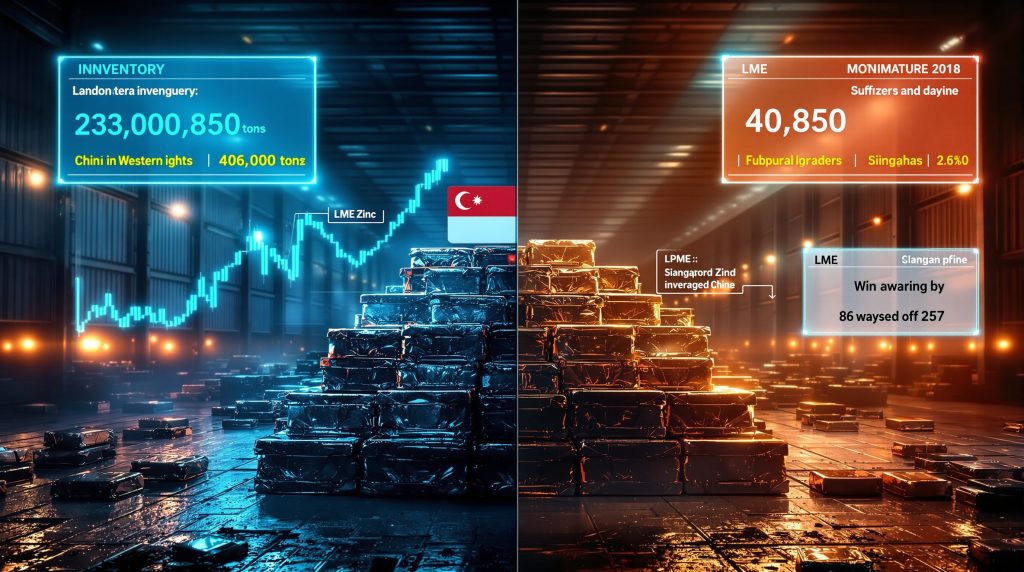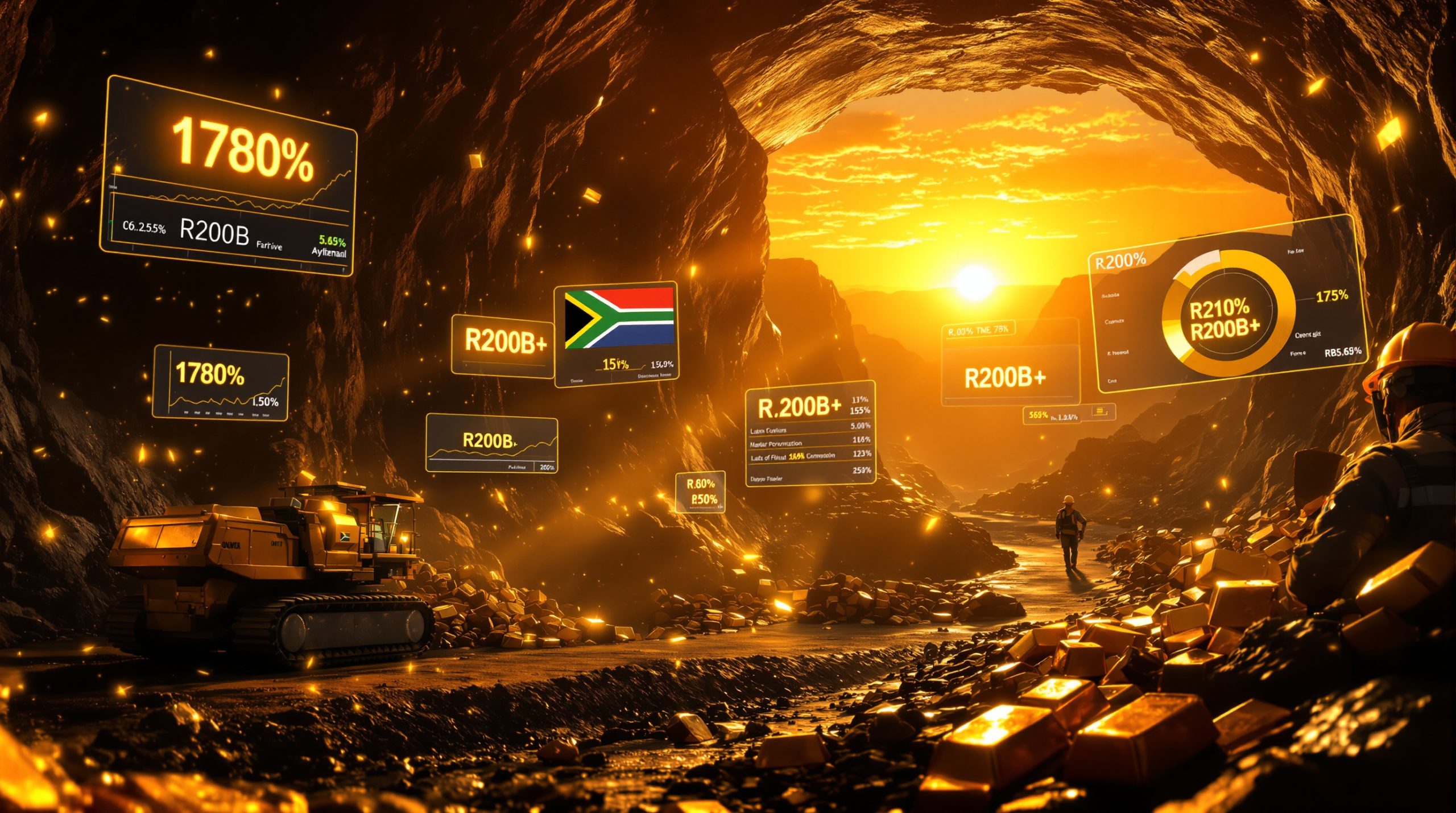Why Are LME Zinc Stocks Reaching Critical Lows?
The London Metal Exchange (LME) zinc market faces a dramatic inventory situation in 2025, with stocks plummeting from 230,000 tons in January to a mere 40,850 tons by October. Even more alarming, available tonnage—excluding metal awaiting physical load-out—stands at just 30,625 tons, representing less than one day's worth of global zinc consumption. This severe depletion has triggered market anxiety, evidenced by increasingly volatile LME time-spreads and a cash premium over three-month prices recently spiking to $60 per metric ton, a level not witnessed since 2022.
The rapidity of this inventory decline has caught many market participants off guard, creating tension throughout the zinc supply chain. Such extremely low stock levels indicate potential physical metal shortages in key consumption regions, particularly across Western markets.
The Severity of Current Inventory Levels
Historical data shows current available tonnage levels represent one of the tightest inventory situations in many years. With global zinc consumption running at approximately 13.5 million tons annually, the 30,625 tons of available LME inventory provides minimal buffer against supply disruptions.
Off-warrant inventory—metal in LME-approved warehouses but not on warrant—offers little additional comfort at just 12,087 tons scattered throughout the warehouse network. This means even the traditional "shadow inventory" that often materializes during tight market conditions is largely absent.
Market analysts note that while zinc has experienced inventory fluctuations before, the current situation appears more severe due to broader depletion across both visible and invisible stocks. Time-spread volatility clearly signals physical market stress, with backwardations (cash premiums over futures) indicating buyers are willing to pay significant premiums for immediate delivery.
Is There Really a Global Zinc Shortage?
Despite alarming LME inventory statistics suggesting acute supply constraints, the broader picture presents a fascinating paradox. The International Lead and Zinc Study Group estimates a global surplus of 72,000 tons over the first seven months of 2025. This apparent contradiction reveals a fundamental disconnect between LME warehouse levels and the broader global supply-demand balance.
This dichotomy highlights how regional market imbalances can create misleading signals about global mining landscape. While LME stocks primarily reflect Western market dynamics, they don't necessarily represent the complete global picture.
Perhaps most telling is the zinc price response—prices haven't surged as dramatically as depleted LME zinc stocks might suggest. This muted price reaction indicates that the market recognizes the regional nature of the current tightness rather than perceiving a true global shortage.
Explaining the Paradox
The zinc market paradox stems from several factors:
- Global mined zinc production increased 6.3% year-on-year in the first half of 2025
- Refined zinc production, however, decreased by 2.1% during the same period
- Regional production imbalances have created localized shortages amid overall surplus
- Price signals suggest traders anticipate eventual rebalancing through cross-regional flows
The contrasting statistics of rising mine production against falling refined output point to a processing bottleneck rather than a fundamental raw material shortage. This bottleneck appears concentrated in Western smelting operations, while Chinese production has expanded.
How Has Singapore Become Central to the Zinc Inventory Story?
Singapore has emerged as a crucial hub in the global zinc inventory narrative, particularly regarding LME stock movements. Export data reveals that zinc shipments from Singapore have accelerated significantly since Q4 2024, reaching over 50,000 tons in August 2025 alone. This export surge has brought Singapore's year-to-date zinc exports to 240,000 tons.
The strategic importance of Singapore in the zinc market cannot be overstated. Having held the majority of LME zinc inventory for approximately two years, Singapore's warehouses have functioned as a critical buffer for global supply chain disruptions. However, this role appears to be diminishing as stocks deplete without replenishment.
Singapore's Changing Role
Singapore's transformation from inventory holder to net exporter reflects broader market dynamics:
- Export acceleration reached 50,000+ tons in August alone, bringing 2025 exports to 240,000 tons
- Diverse destinations include various Asian markets plus 20,000 tons to the United States in August
- Import volumes have collapsed to minimal levels, suggesting depletion of even off-market storage
- The dramatic reversal in trade flows indicates systematic inventory drawdown rather than normal market cycling
This shift carries significant implications for global zinc market liquidity. As Singapore's traditional role as an inventory buffer diminishes, the market loses flexibility to respond to sudden supply disruptions.
What's Causing the Western World's Zinc Supply Squeeze?
The fundamental cause of Western zinc market tightness appears to be a series of production disruptions at key smelters, creating gaps in the supply chain that LME stocks have been drawn down to fill. These operational issues have constrained refined zinc output despite adequate mine production.
The smelter bottleneck reflects both planned and unplanned production cuts across multiple regions. Maintenance schedules, operational challenges, and smelter shutdown effects have combined to create a significant refined zinc deficit in Western markets.
Smelter Production Challenges
| Region | Smelter Issue | Impact |
|---|---|---|
| Brazil | Production decline | Contributing to refined output drop |
| Kazakhstan | Operational issues | Reducing regional supply |
| Japan | Closure of Toho Zinc's Annaka plant | Permanent capacity reduction |
| South Korea | Curtailments at Seokpo smelter | Temporary supply constraint |
| Australia | Output reduction at Nyrstar's Hobart plant | 25% production cut |
| Italy | Disruptions at Glencore operations | European supply tightness |
This collection of smelter issues has created a significant bottleneck in the refined zinc production chain, despite global mined zinc production increasing by 6.3% year-on-year in H1 2025. The processing constraints have prevented the increased mine output from reaching end consumers in refined form, particularly in Western markets.
Why Is China's Zinc Market Moving in the Opposite Direction?
While Western markets struggle with tight supply, China's zinc market presents a completely different picture—one of expanding production and growing inventories. This divergence highlights the increasingly bifurcated nature of the global zinc market.
Chinese smelters have significantly increased production since Q2 2025, leveraging improved raw material availability and more favorable economics. Unlike their Western counterparts facing operational challenges, Chinese facilities have capitalized on abundant concentrate supplies.
China's Zinc Production Boom
The Chinese zinc sector has experienced remarkable growth across several metrics:
- Treatment charges have risen to $87.50 per ton from negative territory in late 2024
- Zinc concentrate imports jumped 43% year-on-year over January-August, on track for record annual volumes
- National refined production increased 7% year-on-year through August
- Domestic consumption growth hasn't kept pace with production expansion
This production boom has created significant oversupply within China's domestic market, leading to inventory accumulation. While Western stocks deplete, Shanghai Futures Exchange (SHFE) zinc inventories have steadily risen, creating a stark regional contrast.
The improved treatment charges—fees paid by miners to smelters for processing concentrate into refined metal—indicate a favorable environment for Chinese smelters. As these charges turned negative in late 2024, suggesting a concentrate shortage, their recovery in 2025 signals abundant raw material supply and improved smelting profitability.
How Are Global Zinc Market Imbalances Reflected in Pricing?
The stark contrast between Western tightness and Chinese surplus is clearly visible in the pricing relationship between the LME and Shanghai Futures Exchange. This pricing divergence provides perhaps the clearest evidence of the market's regional fragmentation.
Price differentials between international and Chinese markets have widened dramatically, creating potential opportunities for arbitrage trading. The growing gap suggests market forces are building pressure for eventual rebalancing.
The Growing Price Divergence
The price disparities reveal the extent of market segmentation:
- SHFE inventory has risen by 70,300 tons since January to 100,544 tons, reaching the highest level since August 2024
- Shanghai zinc currently trades at a spot discount of over $330 per ton to LME prices
- This discount represents the widest gap since 2022-2023, when China last became a net exporter
- The arbitrage window approaches levels that historically triggered significant export flows
These pricing signals reflect the fundamentally different supply-demand balances in each region. While Western prices respond to physical tightness, Chinese prices reflect domestic oversupply. The widening gap creates economic incentives that may eventually facilitate metal flows from surplus to deficit regions.
Will Chinese Exports Solve the LME Stock Problem?
The widening price gap between Chinese and international markets is approaching levels that could trigger significant export flows, potentially relieving pressure on LME inventories. Market history suggests similar conditions have previously led to substantial Chinese exports.
The critical question facing the market is whether this arbitrage opportunity will materialize quickly enough to prevent further LME stock depletion and potential market dislocations. While economic incentives are building, various factors influence the timing and magnitude of potential export flows.
Export Potential Analysis
Several factors will determine the export response:
- Historical precedent shows similar conditions in 2022-2023 led to China becoming a net exporter
- The current discount is trending toward export-profitable levels but hasn't fully reached that threshold
- Analysts at BNP Paribas expect "a growing export incentive over the next two to three months"
- Logistical considerations and export licensing requirements may create delays
For exports to become economically viable, the arbitrage window must widen slightly further to cover transportation costs, export taxes or duties, and associated administrative expenses. Current trends suggest this threshold could be reached in the near future if current market dynamics persist.
Once profitable, Chinese exports could provide the additional units needed to ease LME tightness. However, the timing remains uncertain and dependent on both market forces and policy decisions within China regarding resource exports.
What Does This Mean for Zinc Market Participants?
The current zinc market situation presents both risks and opportunities for different market participants, from physical traders to financial speculators. Understanding the potential outcomes can help stakeholders position appropriately for various scenarios.
For those with short positions on the LME, the current inventory squeeze creates significant risk. Without prompt inflows of metal into LME warehouses, shorts may face difficult delivery obligations and potential financial consequences. Conversely, those with long positions may benefit from continued backwardations and potential price appreciation.
Strategic Implications
Different market participants face varying implications:
- Physical traders: Arbitrage opportunities may develop as regional price gaps widen, but require careful management of logistics and timing
- Western consumers: May face continued premium pressures and potential supply challenges until market rebalances
- Chinese producers: Positioned to potentially benefit from export opportunities if arbitrage windows open sufficiently
- Investors: Volatility creates both risks and opportunities, with time-spread trading strategies particularly relevant
For physical zinc consumers in Western markets, securing supply through term contracts becomes increasingly important during periods of low exchange inventories. Spot market purchases may carry significant premiums until the market rebalances.
Producers outside China face a complex situation—while tight physical markets should support higher premiums, the potential for increased Chinese exports could eventually pressure prices. The timing of Chinese export flows will largely determine how this balance evolves.
How Do Zinc Inventory Cycles Compare to Other Base Metals?
The zinc market's current inventory situation shares similarities with patterns seen in other base metals, particularly copper, where regional imbalances have created similar disconnects between visible stocks and global balances. Comparing these dynamics provides valuable context for understanding zinc's likely trajectory.
Copper markets have frequently exhibited similar regional fragmentation, with tight Western inventories coinciding with more abundant Chinese stocks. These patterns often resolve through eventual cross-regional flows when arbitrage opportunities become sufficiently attractive.
Cross-Metal Comparison
Zinc's inventory cycle shows both similarities and differences compared to other base metals:
- Copper parallels: Similar regional divergence between tight Western markets and more balanced Asian markets
- Aluminum contrast: More balanced global inventory distribution due to different market structure
- Nickel comparison: Different dynamics due to class 1/class 2 segmentation and greater substitution options
- Lead similarities: Often follows zinc due to co-production relationships and shared smelting processes
Zinc's relatively concentrated production and lower levels of substitutability make its inventory cycles particularly impactful on prices. While technological substitution can mitigate shortages in some metals, zinc's specific applications—particularly in galvanizing—limit short-term alternatives.
The current zinc inventory cycle appears to be following a recognizable pattern of regional imbalance followed by arbitrage-driven rebalancing. History suggests these cycles typically resolve within 3-6 months once price differentials reach sufficient levels to incentivize cross-regional flows.
What Are the Key Indicators to Watch?
For those tracking the zinc market, several key indicators will signal whether the current LME stock depletion represents a temporary regional imbalance or a more persistent global supply issue. Monitoring these signposts can provide early warning of market direction changes.
The most critical indicator remains the Shanghai-LME price differential. Historical patterns suggest exports become profitable when this gap exceeds $350-400 per ton, depending on specific logistics costs and exchange rates.
Critical Market Signals
Market participants should closely monitor:
- Shanghai-LME price differential: Widening beyond $350-400 would likely trigger exports
- Chinese export statistics: Monthly customs data will reveal if exports are accelerating
- Treatment charges: Further increases would suggest improving concentrate availability
- Smelter announcements: Any resolution of Western smelter issues could quickly change the balance
- LME time-spreads: Persistent backwardations would indicate continued physical tightness
The interplay between these indicators will provide valuable insights into market direction. Particularly important is the relationship between physical premiums and exchange time-spreads, which together reflect the true tightness of spot markets.
For those seeking leading indicators, Chinese export licensing activity can sometimes provide early signals of changing trade flows before they appear in official statistics. Additionally, shipping freight rates on key routes between China and Western ports may indicate increasing activity.
FAQs: Understanding the Zinc Market Dynamics
Why haven't zinc prices surged despite such low LME stocks?
The market recognizes that the global zinc balance remains in surplus, with the tightness concentrated in LME warehouses rather than reflecting worldwide availability. The substantial inventory build in China signals that metal is available globally, just not in LME warehouses. This broader context helps explain why price responses have been relatively muted compared to the dramatic inventory drawdowns.
Could we see a major short squeeze in the zinc market?
While the conditions exist for localized squeezes, the potential for Chinese exports to enter the market if price differentials widen further provides a natural relief valve that may prevent extreme market dislocations. Current conditions suggest potential volatility, but the prerequisites for a sustained, major squeeze appear limited by the existence of alternative supply sources, particularly from China.
How quickly could Chinese exports rebalance the global market?
Once the export arbitrage window opens sufficiently, physical metal could begin flowing from China to international markets within weeks. The shipping time from Chinese ports to major consumption centers ranges from 2-6 weeks depending on destination. However, various administrative and logistical factors could influence the speed of this response, including export licensing procedures and freight availability.
Are there structural changes in the zinc market causing these imbalances?
The current situation reflects cyclical rather than structural factors—a temporary mismatch between Western smelter problems and Chinese production growth rather than fundamental changes to the market structure. The zinc market has experienced similar regional imbalances in the past, which typically resolve through trade flows once price differentials create sufficient economic incentives. This cycle is part of the broader mining industry evolution and changing iron ore demand trends that are shaped by tariff impact on markets.
Ready to Spot the Next Major Mineral Discovery?
Discovery Alert's proprietary Discovery IQ model instantly notifies investors about significant ASX mineral discoveries, turning complex data into actionable insights before the broader market reacts. Understand why historic discoveries can generate substantial returns by visiting Discovery Alert's dedicated discoveries page and begin your 30-day free trial today.




